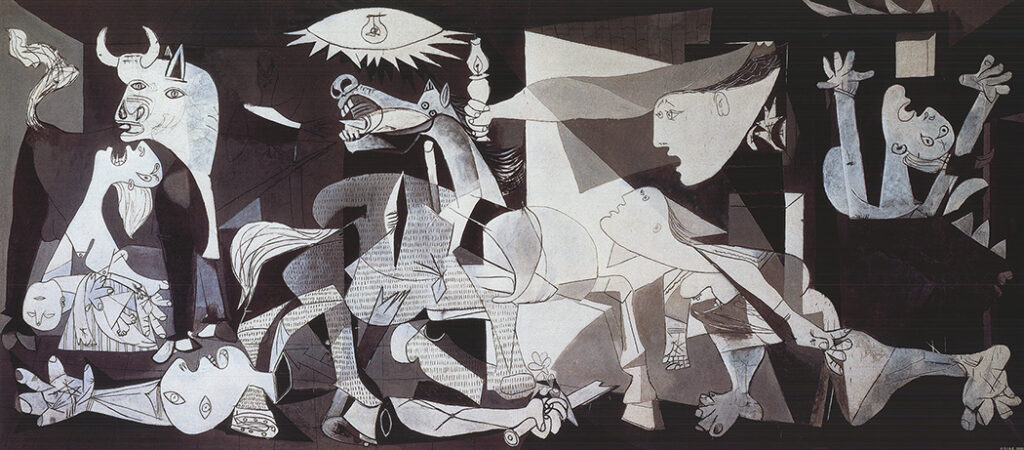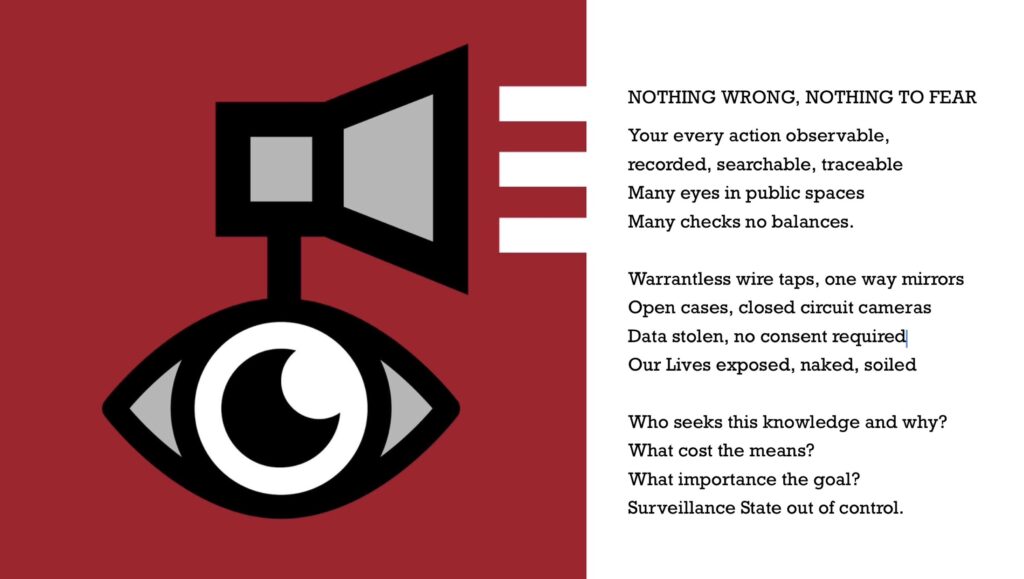
ART INFLUENCING CHANGE
Linking my current thoughts on these turbulent times and examining Protest Art as a powerful medium for change (not forgetting promoting my new Art Exhibition).
I lie here in the comfort of my safe bed struggling to organise my random thoughts into something coherent and fit for public consumption. I look out of my window. All is calm, the world appears to be spinning as it should. Check. The sun still shines. Check. Yet pull back the covers and we get a Reality Check. All is not well in the world, these are testing times. We are living through an age of global instability and personal insecurity: endless conflict, rise of neo-fascism, capitalist greed, political corruption, fear, paranoia, poverty, crashing economy, attacks on liberty, censorship, climate issues, Brexit, global pandemic, the list goes on. Yet, in general, I suggest, many of the readers of this article live in both comfort and denial.
You may ask yourself is this blog just a shameless attempt to plug my new exhibition ‘Warning Signs’. The answer is of course yes but I’m taking this opportunity to give an insight into my motivation and then look at the role and perhaps importance of Protest Art.
Warning Signs
What’s it all about? This passionate project is this artist’s attempt to try and say something of importance and create a thought-provoking snapshot of our turbulent times with a combination of cautionary verse and iconic imagery. It’s been a great challenge, a very personal project that uses my skills as an artist and designer and helped develop my written word. I have always advocated that as creatives we have a platform, and an audience and because we are thoughtful creatures, a responsibility to stand up and say something. We may or may not influence any change or enlighten anyone, but no matter as long we try.
The idea of doing something no matter if it makes only a small difference is where I’m coming from with this new work. All the lies, political corruption, constant needless conflict, exploitation of both our planet’s resources and fellow humans etc does not surprise me, but what does though, is the acceptance, the lack of people willing to voice their concerns and take a stance. So is this just a shameless plug or is at a chance to open a discussion window with a wider audience and hope the small ripple effect generates some positive change. You decide.
Look out, listen can you hear it
Panic in the County Hall
Look out, listen can you hear it
Whitehall (got us) up against a wall
Up against the wall
Consternation in Brixton
Rioting in Notting Hill Gate
Fascists marching on the high street
Carving up the welfare state
Operator get me the hotline
Father can you hear me at all?
Telephone kiosk out of order
Spray-can writing on the wall
UP AGAINST THE WALL, The Tom Robinson Band
Protest Art
Protest Art involves creative works grounded in the act of addressing political or social issues. Throughout history, artists have stood up for the voiceless and marginalised, reacting against injustice and oppression.
Often images speak louder than words. Protest Art can make a message accessible and universal. Working outside traditional boundaries and rules it can influence the thinking of the general public, as well as leaders and politicians. As a medium it can be very budget friendly: posters, leaflets, banners etc can provide an affordable means of protest and often used as part of rallies or acts of civil disobedience.
Art is not a mirror held up to reality but a hammer with which to shape it
Bertolt Brecht
Historically Protest signs at demonstrations have been extremely influential and effective to many movements, including the Suffragette movement, the Civil Rights movement, and more recently the Black Lives Matter movement.
The relationship however, between art and political propaganda has been a somewhat uneasy marriage. Many in the art world fundamentally disagree with the idea of art being used to influence and sell. I understand the concerns here, however it is hard to disagree with the recognition of the intrinsic power of this art form. Done well it can influence the thinking of the general public, as well as leaders and politicians.
Artist as Activist
Due to the nature of these thoughtful, creative people, it comes as no surprise that artists are often also activists; devoting their artistic output to promoting awareness of a cause and creating a visual focus to help accelerate change.
Here’s a few examples:
Campaign Support – OBEY aka Shepard Fairey
Shepard designed an iconic poster for the Obama campaign in 2008, it was titled, ‘Hope’ and was adopted as an emblem for the official campaign, reaching out and communicating to people across the globe.
Feminist Protest Art – The Guerillia Girls
In 1985, the Guerrilla Girls launched their campaign to highlight the lack of recognition and inclusion for women in the art world. They concealed their identities with gorilla masks and produced a wealth of clever and humorous posters, bill boards, flyers and books which criticise institutions and private galleries in support of marginalised artists.
Political Protest Art – Ai Weiwei
Ai Weiwei is one of the most famous protest artists today. His work is deeply political and critical of China’s Communist Party. Not surprisingly this led to Ai being arrested in 2011 and imprisoned for 81 days, then banned from leaving the country for 4 years. The alleged charge was ‘economic crimes.’ However Ai’s supporters viewed his detention as a political retaliation from the government, calculated to send a strong message that dissent will not be tolerated and no one is immune.
Politicaly Charged Fine Art – Pablo Picasso
Picasso’s famous oil painting, ‘Guernica’ 1937, is regarded by many (count me in) as one of the most powerful and moving anti-war statements in history and has remained relevant as a symbol of protest. This enormous canvas painted as an immediate reaction to the Nazi’s devastating bombing practice on the Basque town of Guernica during the Spanish Civil War. Stop me if you’ve heard this one…While Picasso was living in Nazi-occupied Paris during World War II, one German officer allegedly asked him, upon seeing a photo of Guernica in his apartment, “Did you do that?” Picasso responded, “No, you did.

I could ramble on forever on this fascinating subject but let’s round this up before your coffee gets too cold! It’s clear to me that art can be more than just pleasant eye candy, used wisely it can reflect and critique our politics, inspiring people to come together and yes, hopefully influence change. My forthcoming exhibition, Warning Signs is my small contribution to the cause. Please visit my art website to see the work. www.lennon-art.co.uk

NOTHING WRONG, NOTHING TO FEAR Alan Lennon 2023

